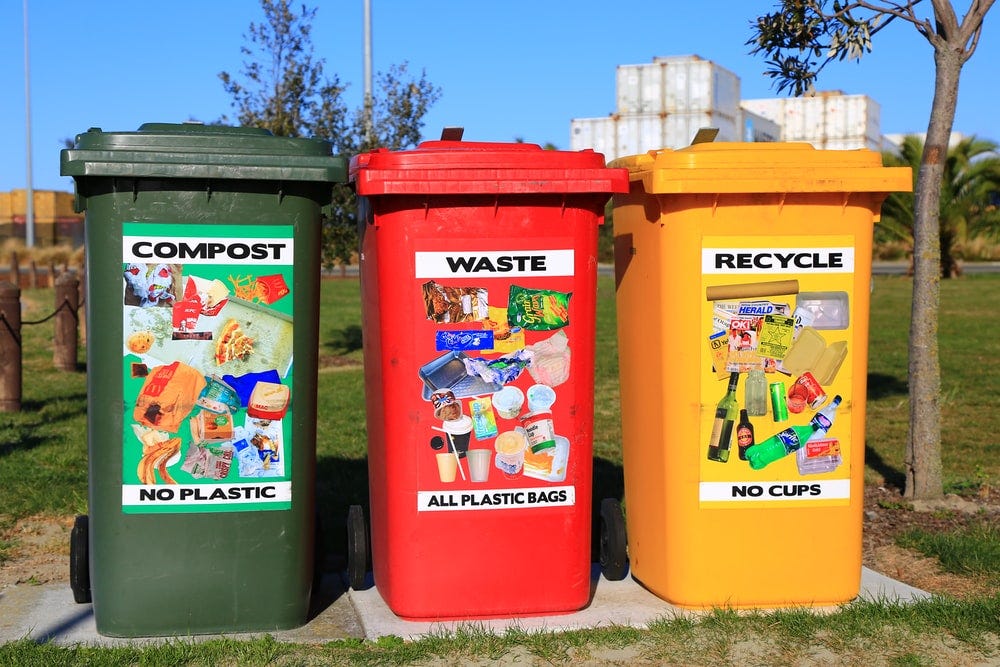We are getting close to the one year anniversary of when I started this newsletter and it has progressed significantly from my very first post. I’m spending some time in reflection over the next few weeks because I think I’ve gained more knowledge and I hope I’m a better writer. Over the last year of researching, reading, and writing here I’ve come to realize the importance of what Dan Green of Helpsy called “The Reverse Logistics Company.”
We often consume without any thought to what we will do with our consumption when it is finished. A sewer or septic system takes away our bodily waste and municipal trucks take away our recycling, trash and for some of us we also put our food waste out for pickup. We tend to only notice the logistics of our waste removal when things go wrong such as a septic system back-up or the compost company forgets to pick-up the food scraps (>1 week old food scraps are already decomposing and smell terrible). We give no thought to the complex systems that are trying to sort our waste and turn that waste into something less environmentally harmful or turn that waste into something new. We just want these companies to work and do their jobs without complaint and at the lowest possible cost.
A reverse logistics company handles the collection, sorting, and disposal of our waste. Our bodily waste goes to waste water treatment plants. Our recycling goes to a sorting facility and various recyclers and what cannot be recycled gets landfilled. Our food scraps and clothing waste primarily go to landfills, but there are companies trying to change this linear consumption model. I think that in the 21st century we will see our trash as the raw materials of the future.
The average American produces about 100 pounds of clothing waste every year. If you want to understand why this is the case you can start here and if you want some ideas on how to alleviate this situation you can go here. Companies like Helpsy, Jeplan, and Perpetual are trying to figure out how to either stop clothing from going to landfills, turn clothing back into clothing, or turn plastic bottles into clothing. There are viable solutions out there that need to be funded and built.
Every Monday morning my family’s mixed recycling gets put on the curb and it gets dumped into a big truck that hauls it away. There are typically about four different grades of plastic in there, paper, polymer coated paper, aluminum, and glass. Only about 9% of the plastic we put on the curb will ever get recycled. I suspect a significant portion of our recycling waste stream actually get landfilled.
I’ve written before about mechanical recycling of plastics here, and chemical recycling of plastics here, and here. I’ve also written about the public policy initiatives being pushed by NGOs that would be aligned with Green Peace and those aligned with the chemical industry. The problems around plastic waste are more pernicious than food waste or clothing waste because new plastic is typically very cheap and plastic waste is so ubiquitous, hard to identify and sort, and usually kind of dirty. The issues around supply chain disruptions from the Texas Freeze and Hurricane Ida might be a huge opportunity for plastic recyclers.
Some other areas where I think reverse logistics companies will do well:
Carbon dioxide point of capture and utilization
Grey water treatment (not sewage)
Electronics waste (old laptops, computers, monitors, cellphones)
Construction waste (shingles, wood, concrete)
Right now, I’m working on gathering some information for biodegradable plastics and food scrap composting. If you are working on biodegradable plastics or biodegradable plastic packaging let me know. I’m interested in talking and learning about what is considered state of the art right now.
Twitter: @tpolymerist





On carbon capture reverse logistics check out the Summit pipeline - https://www.summitcarbonsolutions.com/news/scsexpansionannouncement